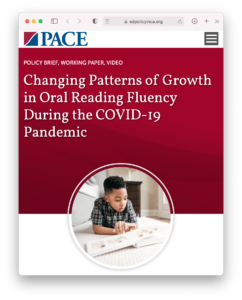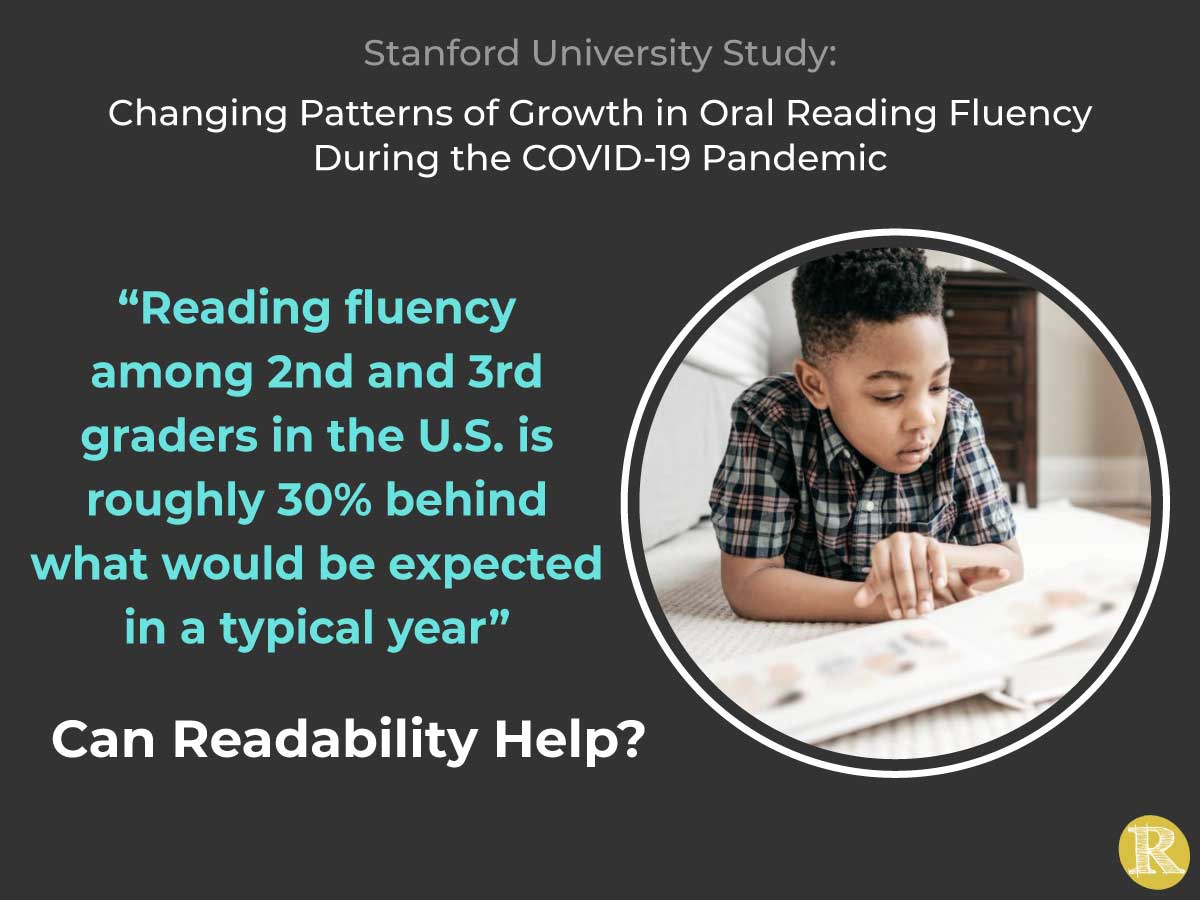Fluency Growth Stalled
The Center for Policy Analysis for California Education at the Stanford Graduate School of Education evaluated changes in Oral Reading Fluency (ORF) for students in early elementary school. Their goal was to understand changes that may have occurred as a result of the COVID-19 pandemic.
The report states that reading skills among young students stalled during the pandemic. The researchers find that reading fluency among second- and third-graders in the U.S. is roughly 30 percent behind what would be expected in a typical year.

The Findings: losses from school closures in spring ’20 were not fully made up in fall, especially at lower achieving schools.
In announcing the report, Stanford notes that “Reading fluency is fundamental for academic development more broadly, the researchers said, because problems with this skill can interfere with students’ ability to learn other subjects as they make their way through later grades.”
“It seems that these students, in general, didn’t develop any reading skills during the spring – growth stalled when schooling was interrupted and remained stagnant through the summer. It picked up in the fall, which is a testament to the work that educators did in preparing for the new school year and their creativity in coming up with ways to teach. But that growth was not robust enough to make up for the gaps from the spring.”
Ben Domingue, PhD, Stanford University
Can Better Readability Help?
Readability research has demonstrated instantaneous improvement in reading speed and accuracy when students are offered personalized reading formats. Results of the Proof of Concept Study Readability Matters conducted with Adobe demonstrate significant fluency gains with simple changes to text format for individual readers. Readability Matters is anxious to see how better reading formats can be used to make up these learning gaps.
Educators interested in working with personalized text can contact the team at [email protected].
Changing Patterns of Growth in Oral Reading Fluency During the COVID-19 Pandemic
SUMMARY
We use data from oral reading fluency (ORF) assessments to examine COVID-19’s effects on children’s ORF in over 100 U.S. school districts. Students’ development of ORF largely stopped in spring 2020 following the onset of the COVID-19 pandemic. In fall 2020, students’ gains in reading were stronger and similar to prepandemic rates. However, fall gains were insufficient to recoup spring losses; overall, students’ ORF in second and third grade is approximately 30 percent behind expectations.  We also observe inequitable impact: students at lower achieving schools are falling farther behind and 10 percent of students were not assessed this fall. While growth in ORF was stronger in the fall than in the spring, measures to address accumulated learning losses and to support students falling behind are needed.
We also observe inequitable impact: students at lower achieving schools are falling farther behind and 10 percent of students were not assessed this fall. While growth in ORF was stronger in the fall than in the spring, measures to address accumulated learning losses and to support students falling behind are needed.
Benjamin W. Domingue | Stanford University
Heather J. Hough | Policy Analysis for California Education, Stanford University
David Lang | Stanford University
Jason D. Yeatman | Stanford University
Read the full publication here.
ABOUT PACE: Policy Analysis for California Education (PACE) is an independent, non-partisan research center led by faculty directors at Stanford University, the University of Southern California, the University of California Davis, the University of California Los Angeles, and the University of California Berkeley. PACE bridges the gap between research, policy, and practice, working with scholars from California’s leading universities and with state and local decision-makers to achieve improvement in performance and more equitable outcomes at all levels of California’s education system, from early childhood to postsecondary education and training.




